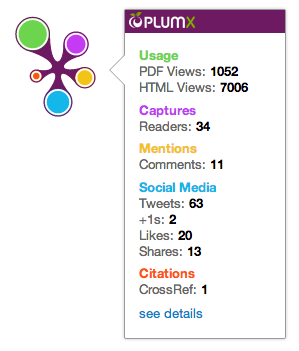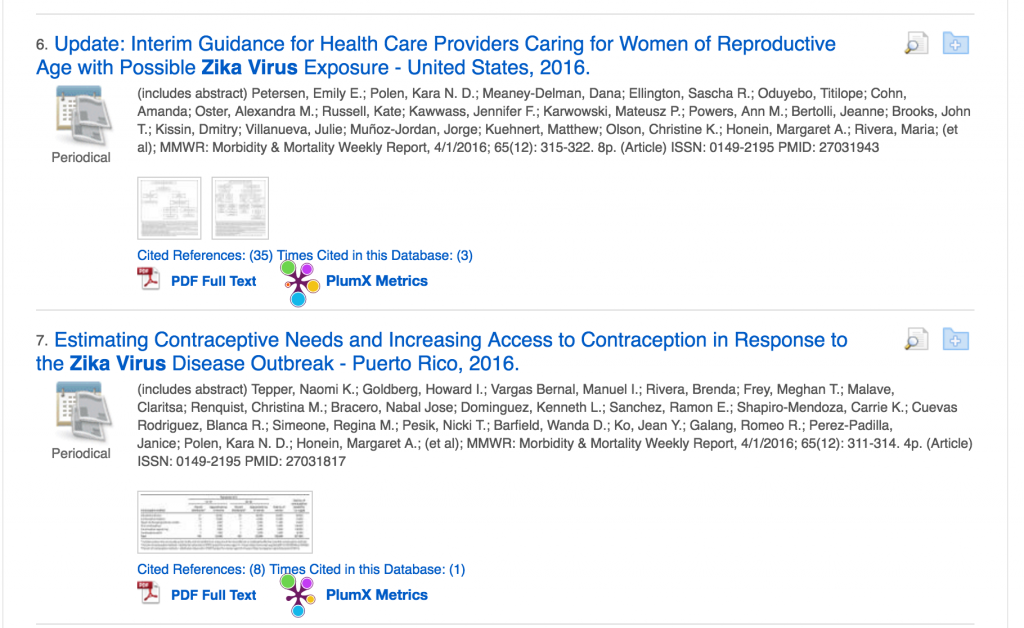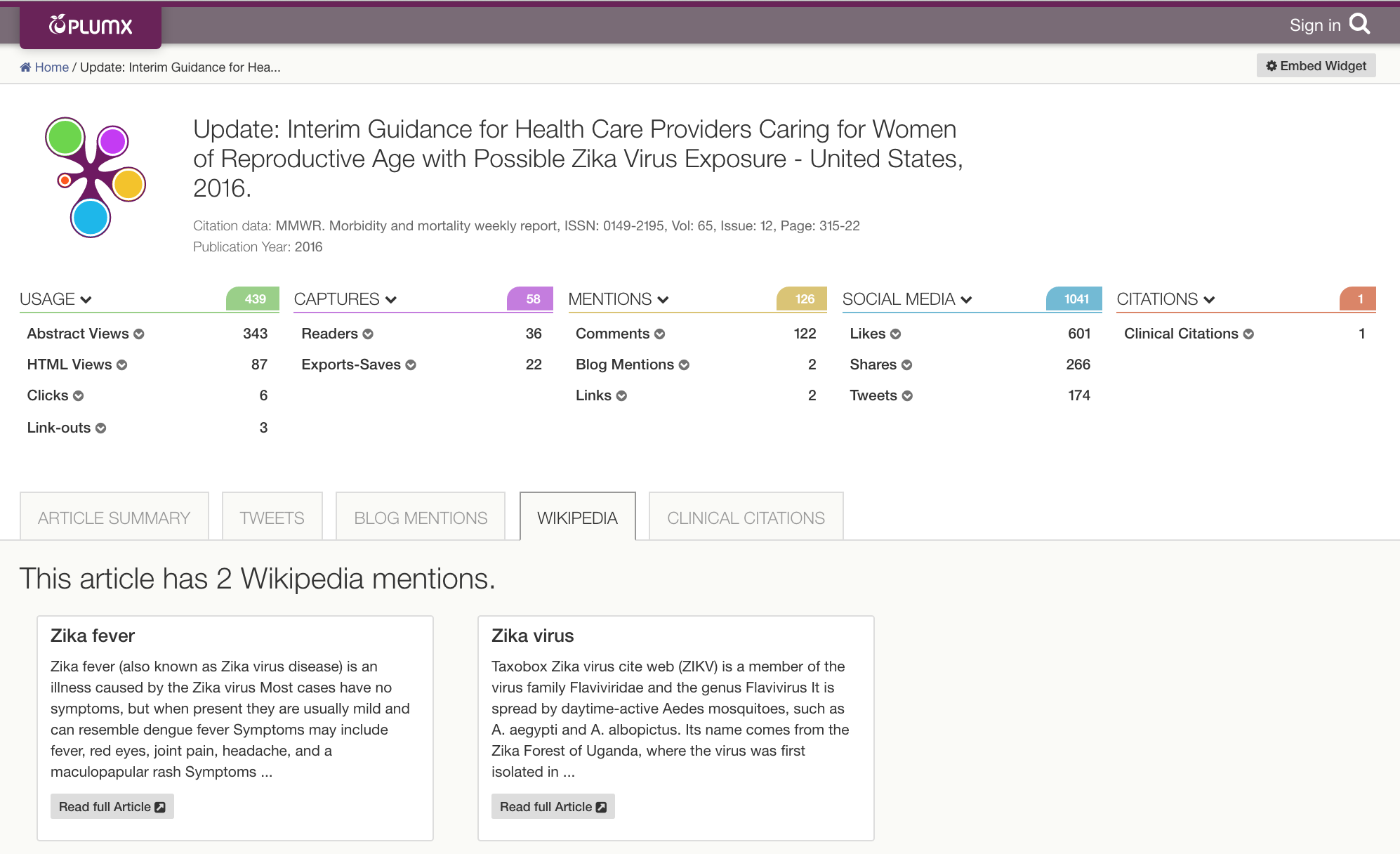The Plum Print: Coming to a Result List Near You
Today we announced adding the PlumTM Print to EBSCO Discovery ServiceTM (EDS) and EBSCOhost® databases.
The Plum Print is a visualization of the altmetrics gathered for each research artifact. It visually changes depending upon the number of metrics in each of the five metric categories:
- Usage – The most sought after metric after citations

- Captures – A leading indicator of citations
- Mentions – Where people are truly engaging
- Social Media – Tracks the promotion and buzz of research
- Citations – When one document cites another
(You can read more about the Plum Print here.)
Last year we started the spread of visualizing altmetrics with a pilot project with CINAHL, a widely-used EBSCO Nursing database. The University of Arkansas wrote an excellent blog post describing this feature.
We conducted a study with CINAHL users to determine their reactions. The study included academic librarians, faculty members, registered nurses and college students. Overall, their reaction was positive.
Here are the key takeaways from that study:
- Users “get it”
- Participants understood the visual design of the widget, and for the most part understood its functionality and the metrics information represented.
- Most users want it
- The academic librarians and nurses included in the study generally found the widget to be valuable; and students had an overwhelmingly positive perception of its value and utility.
- The users that don’t want it can tolerate it
- The minority of users who indicated that they did not find the widget and associated metrics to be valuable also indicated it would not contribute negatively to their experience.
What the study participants liked about it was:
- The highly visual nature of the Plum Print
- Its usefulness in helping evaluate resources
- Its ability to help them save time
Here are some quotes from the research:
Something that allows the user to rank articles based on how other people are using them (faculty member)
It’s potentially a step ahead of just citation, it helps to incorporate how people are sharing things on social media in terms of impact (academic librarian)
This would have been great for my dissertation; it would have saved me hours (student)
Let’s see what these users saw. Here is an example of the Plum Print in the “Zika Virus” search result list.

By clicking through on the first Plum Print you get to the metrics for this CDC Report. You can see lots of interesting things about the metrics that we gather, including that this report has:
- A clinical citation
- Been mentioned in two Wikipedia articles and two blog posts
- 174 Twitter interactions
Based upon this positive feedback we’ve proceeded with plans to roll out this feature to more EBSCO customers through EDS and other EBSCOhost databases. To prepare for this, our team has been hard at work making sure we have the scale to support this. By this I mean two things:
Users
Scale in terms of handling a lot more users. We have always built PlumX with industrial strength in mind. Therefore, we have been careful to consider that opening up the Plum Print to these other EBSCO platforms will create a lot more users and we wanted to make sure that our system could accommodate that.
Artifacts
Scale in terms of having metrics for a lot more artifacts. Millions and millions and millions of more artifacts in fact. The altmetrics and Plum Print experience is going to pretty lousy if you don’t see many Plum Prints. Therefore, we have been carefully building out our metrics database to increase the number of articles that we track by over tenfold.
We will be contacting the EBSCO customers over the summer to inform them of the update of their systems with the Plum Print.
